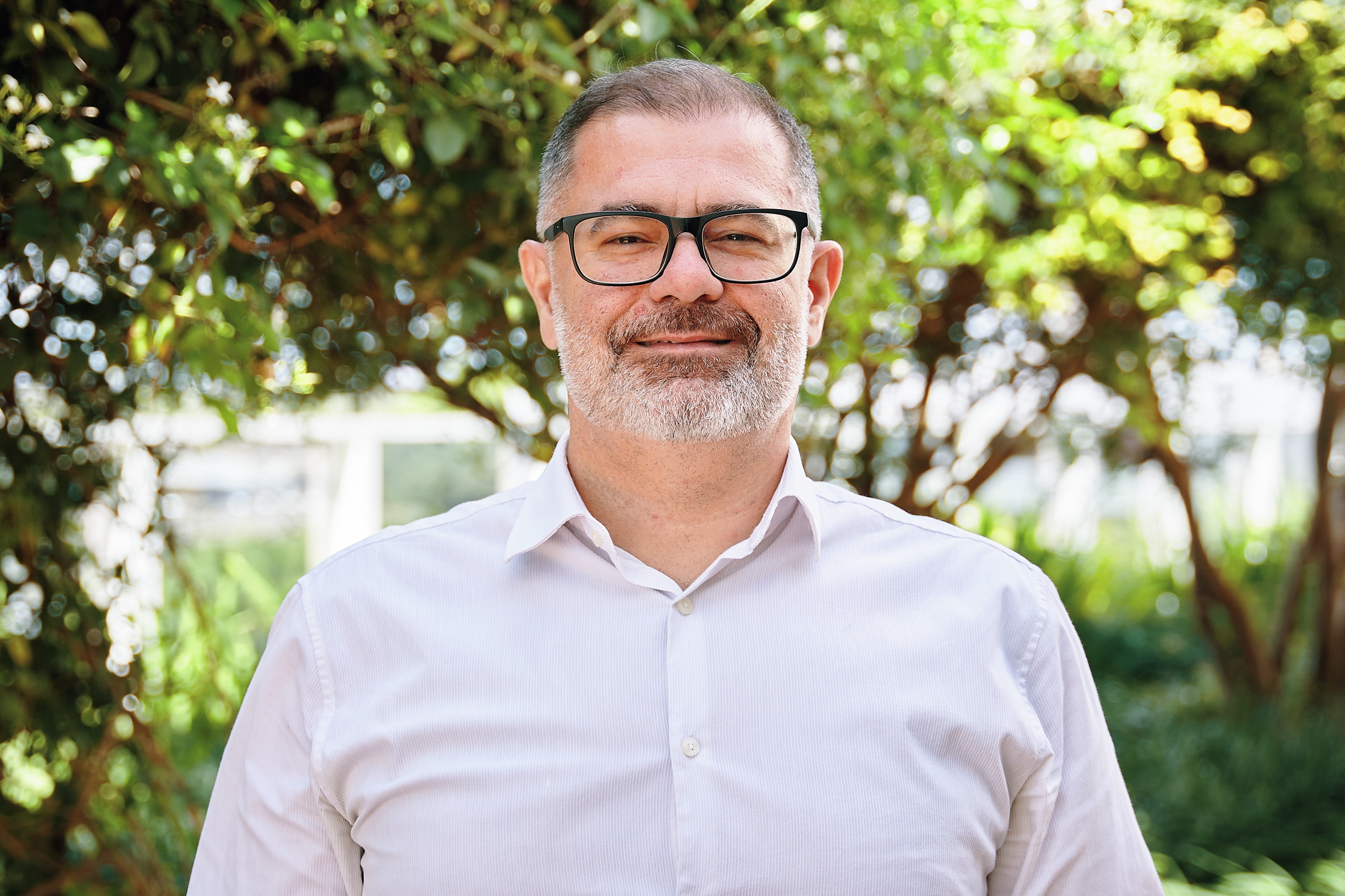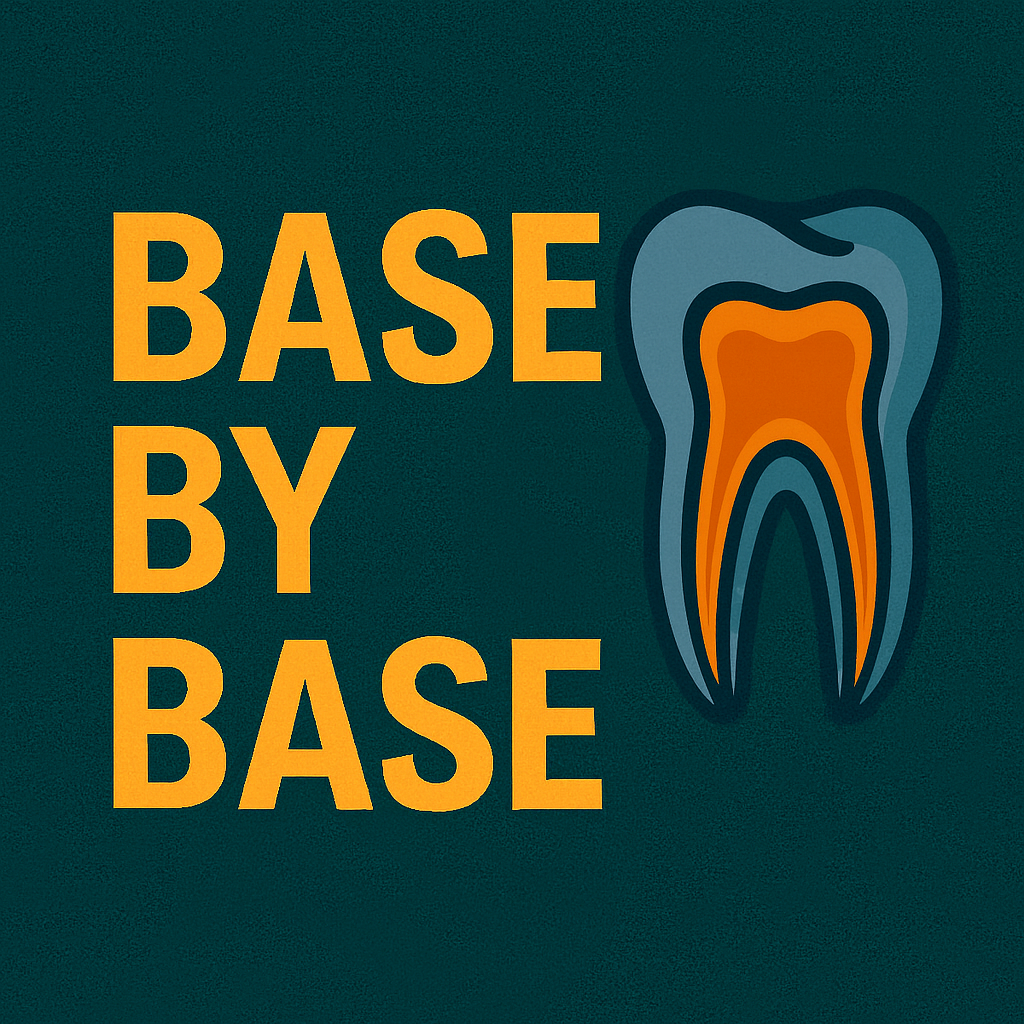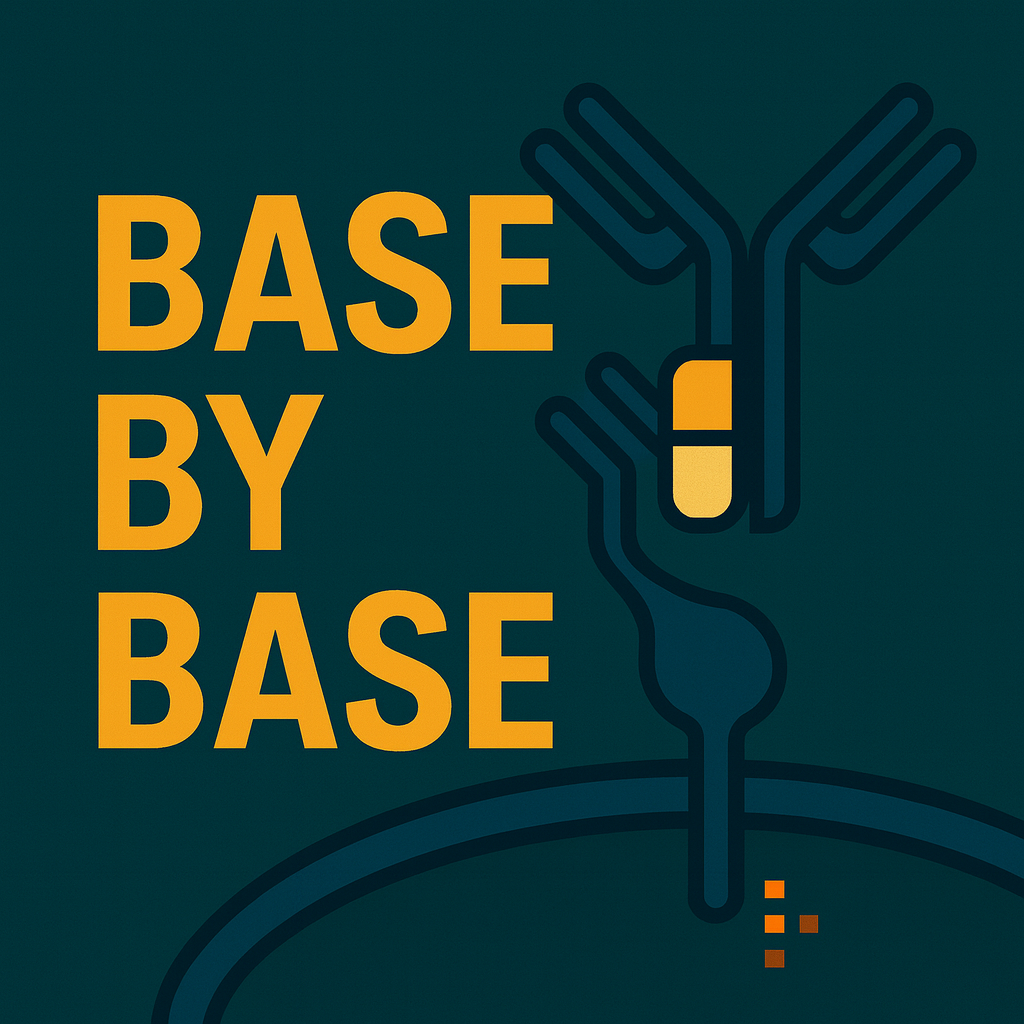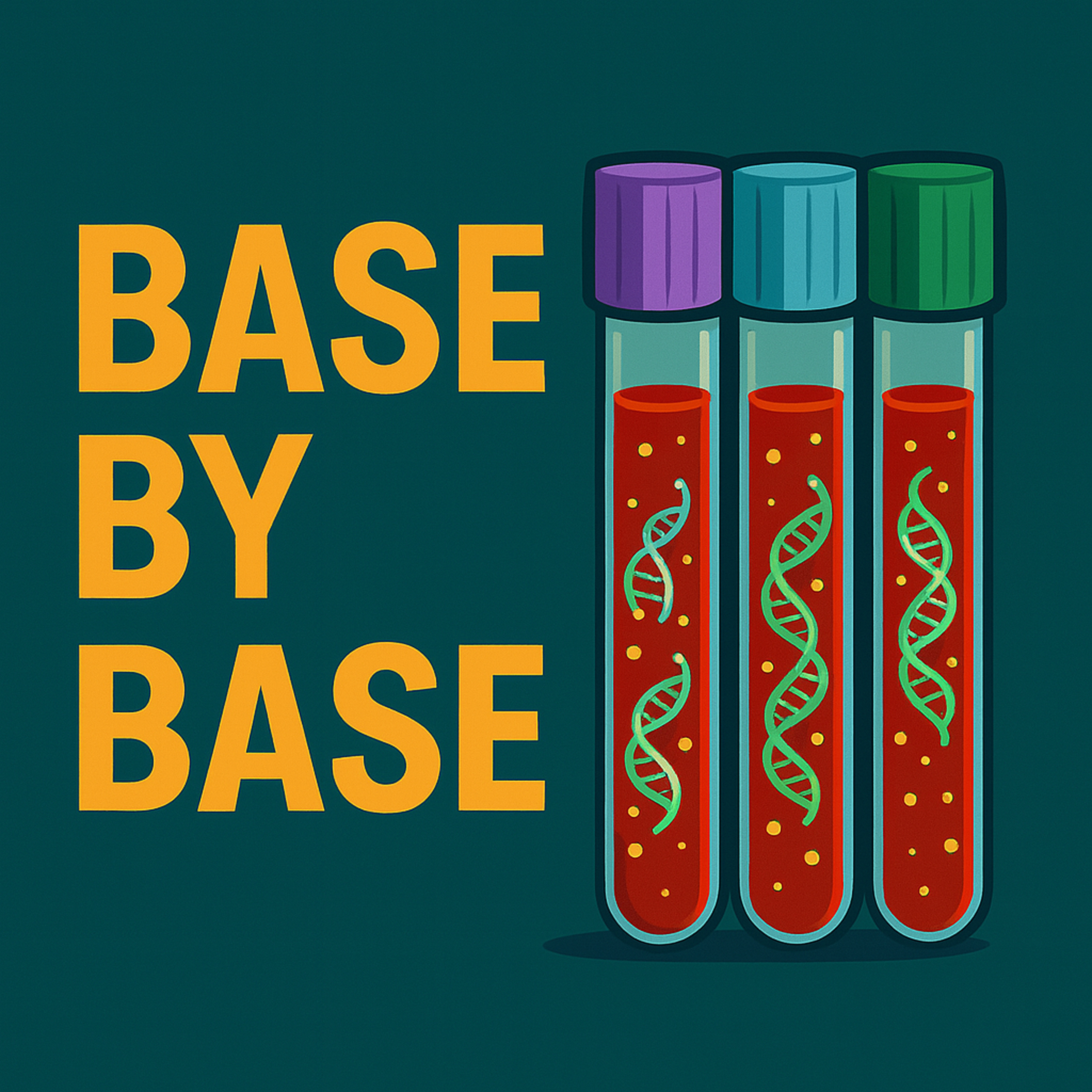Episode Transcript
[00:00:00] Speaker A: Foreign.
Welcome to Bass by Bass, the papercast that brings genomics to you wherever you are. You know that feeling a sudden sharp toothache that just makes you wince? Or maybe that really jarring sensitivity to cold drinks, or even just a dull, persistent ache that, well, it just won't quit. Sounds familiar, right?
Most of us have had some kind of run in with dental discomfort.
[00:00:35] Speaker B: Oh, absolutely. It's incredibly common and usually think, okay.
[00:00:38] Speaker A: Maybe too many sweets or maybe I missed this spot brushing. But what if that pain, that really deep seated problem in your tooth, wasn't just about that? What if it was connected to something much deeper, something fundamental, written right there in your genetic code.
[00:00:51] Speaker B: Exactly. I mean, imagine if your risk for these really common dental infections, we're talking conditions that affect all, what, over 80% of adults globally, wasn't purely down to, say, diet or how well you brush. What if it was also significantly influenced by the biology you inherited?
And get this. What if these dental issues, which, let's be honest, are often kind of dismissed as minor annoyances, actually held surprising, really quite powerful links to much more serious conditions, things like heart disease or, or diabetes.
[00:01:23] Speaker A: Wow. Okay. So that's exactly what we're going to explore in this deep dive today, how this groundbreaking genetic research is really reshaping how we understand common dental problems. It's revealing these surprising connections to our overall health and maybe even hinting at a future where dental care gets a lot more personalized.
[00:01:43] Speaker B: It definitely makes you rethink that simple toothache, doesn't it?
[00:01:46] Speaker A: It really does. So today we want to shine a spotlight on some incredible work. We're celebrating the cutting edge research from the Fingen and Estonian Biobank research teams and also Dr. Aino Salminen and her colleagues.
[00:01:58] Speaker B: Yes, Their study, which was published in Nature Communications, it's a fantastic example of collaborative science.
[00:02:04] Speaker A: Truly remarkable. They've leveraged these huge integrated data sets to shed light on the genetic basis of what are called pulpal and apical diseases.
[00:02:12] Speaker B: It really pushes the boundaries using genomics to understand these complex health issues in a new way.
[00:02:18] Speaker A: So before we dive into the genetics, maybe let's set the scene a bit. Why is this specific area so important?
[00:02:23] Speaker B: Right. Well, to really grasp the significance, you have to understand the scale of the underlying problem. Untreated dental care is basically. Cavities is the single most common global health issue.
[00:02:36] Speaker A: The most common worldwide.
[00:02:37] Speaker B: Worldwide, we're talking nearly 2 billion people affected. It's staggering.
[00:02:42] Speaker A: That's hard to even picture.
[00:02:43] Speaker B: It is. And when these cavities aren't treated, it's like leaving a door open for microbes. They invade the tooth's inner parts, the sensitive structures. And this leads to a whole cascade of problems, what we group together as pulpal and apical diseases.
[00:02:57] Speaker A: Okay, so what does that actually include?
[00:02:59] Speaker B: Well, you've got things like pulpitis, that's the inflammation of the pulp inside the tooth, often quite painful. Then there's pulp necrosis, where that pulp tissue actually dies off. And also apical periodontitis where which is inflammation and importantly, destruction of the bone and tissues right around the root of the tube.
[00:03:16] Speaker A: Destruction of the bone. Okay, that sounds serious.
[00:03:18] Speaker B: It can be. And the symptoms, they really vary.
[00:03:22] Speaker A: Right, I mentioned the sharp pain, the sensitivity.
[00:03:24] Speaker B: Exactly that. Sharp pain, the temperature sensitivity, tenderness when you bite down. Those are common. But here's a really crucial point, and maybe a bit insidious.
Many of the chronic lesions, the long term damage, are actually asymptomatic, Meaning no pain. Meaning you might have no idea. You could have a significant infection quietly progressing inside your jaw, dissolving bone. And you wouldn't know until, say, a routine dental X ray picks it up.
[00:03:51] Speaker A: Wow.
Silent damage.
[00:03:53] Speaker B: Precisely. And we need to be clear, these aren't just minor inconveniences. Beyond the pain, these infections are a major reason people end up needing teeth extracted. They lead directly to tooth loss.
[00:04:06] Speaker A: And losing teeth isn't just about looks, is it?
[00:04:08] Speaker B: Not at all. Having fewer teeth. It's actually been identified as a significant independent risk factor for developing cardiovascular diseases and even for all cause mortality.
[00:04:17] Speaker A: Seriously, losing teeth is linked to dying earlier.
[00:04:20] Speaker B: The data suggests a link. Yes. And interestingly, the number of teeth can even help improve predictions for future heart problems or developing type 2 diabetes.
[00:04:28] Speaker A: Okay, so understanding what's really going on behind these common infections, the mechanisms, it's not just for dentists anymore.
[00:04:36] Speaker B: Absolutely vital. It's crucial for public health. If we understand the why, we can develop better prevention, better risk assessment for.
[00:04:43] Speaker A: Individuals, and maybe even find new treatments.
[00:04:45] Speaker B: Exactly. New targets that could improve not just your oral health, but your overall systemic health too. And you know, past genetic studies on this were kind of limited in their success. Right, which is why this new really large scale approach was so needed.
[00:04:59] Speaker A: So how did they tackle this? What was the method?
[00:05:01] Speaker B: Well, to dig into this complex problem, they used a really powerful tool, a genome wide association study, or gwas.
[00:05:10] Speaker A: Ggwiss, we hear that term a lot. Can you break that down quickly?
[00:05:13] Speaker B: Sure. Think of it like a huge search across the entire human genome. You're meticulously scanning for tiny genetic variations, often just single letter changes. In the DNA code called snps.
[00:05:24] Speaker A: Snps, Right.
[00:05:25] Speaker B: And you're looking to see if any of those variations are statistically more common in people who have the disease, in this case pulpal or apical disease, compared to people who don't.
[00:05:34] Speaker A: So it's like a massive comparison exercise, looking for genetic flags linked to the condition.
[00:05:40] Speaker B: That's a good way to put it. A massive comparison. And the scale of the study was, well, exceptional.
[00:05:45] Speaker A: How big are we talking?
[00:05:46] Speaker B: They used data from nearly half a million people.
485,230 individuals to be exact. From the Fingin cohort.
[00:05:55] Speaker A: Fingin, okay.
[00:05:56] Speaker B: Yeah. Fingin is amazing because it integrates genetic information with Finland's national health record. So you have genes and health outcomes for a huge population.
[00:06:06] Speaker A: An incredible resource, truly.
[00:06:08] Speaker B: So they compared over 132,000 people who had diagnoses of these dental infections against more than 353,000 people who didn't. The controls.
[00:06:16] Speaker A: Okay.
[00:06:17] Speaker B: And they didn't just look at the broad category. They drilled down into specific subtypes too, like pulpitis versus the more advanced stages like necrosis or apical periodontitis.
[00:06:26] Speaker A: Why is that important, splitting them up?
[00:06:28] Speaker B: Because different stages might have slightly different genetic influences. Right. It helps to pinpoint things more accurately.
[00:06:34] Speaker A: Makes sense. Do they just rely on the fingen data?
[00:06:36] Speaker B: Oh, no. And this is crucial for good science. They were really rigorous about checking their results. They replicated their findings in completely independent groups of people.
[00:06:46] Speaker A: Replication always key in genetics.
[00:06:48] Speaker B: Absolutely. They used additional Fingen subcohorts and also data from the Estonian biobank. If you see the same genetic signal popping up consistently, different populations, you can be much more confident it's a real biological effect.
[00:07:03] Speaker A: So it wasn't just a fluke in one data set.
[00:07:05] Speaker B: Exactly. And they went even further. It wasn't just about finding these genetic links. They wanted to understand how they might work.
[00:07:12] Speaker A: The how is always the interesting part.
[00:07:14] Speaker B: Right. So they did these in depth functional analyses. They looked at which genes were actually switched on or off gene expression in real human dental pulp tissue.
[00:07:23] Speaker A: In the actual tissue involved?
[00:07:25] Speaker B: Yes. Using techniques like EQTL and PQTL analysis, Basically trying to connect the genetic variations they found to actual changes in gene activity or protein levels in the relevant cells.
[00:07:37] Speaker A: So connecting the DNA variation to a biological consequence.
[00:07:41] Speaker B: Precisely. And they also looked at how the genetics of these dental infections correlated with the genetics of other health conditions. Trying to see the bigger picture, the genetic overlaps.
[00:07:51] Speaker A: Okay. That's a really comprehensive approach. So after all that digging, what did they actually find? What were the big.
[00:07:57] Speaker B: Well, the headline is they identified 15 independent genetic loci.
[00:08:02] Speaker A: Loci, so specific spots on our chromosomes.
[00:08:04] Speaker B: Exactly. 15 distinct locations across 12 different chromosomes that were significantly associated with having these endodontic infections. That's a pretty big haul.
[00:08:13] Speaker A: 15. That's definitely more than just one or two genes involved.
[00:08:16] Speaker B: Oh, for sure. It points towards a complex genetic picture. And the strongest signal, the one with the biggest statistical punch, it was on chromosome 22 near a gene called oramad 2.
[00:08:25] Speaker A: Coremanid 2. Okay, what's interesting about that one.
[00:08:28] Speaker B: Get this.
Certain variations in that specific region seem to be protective.
[00:08:35] Speaker A: Protective as in reducing the risk?
[00:08:37] Speaker B: Yes, reducing the risk of getting these dental diseases. Which is fascinating. Right. It suggests some people might have a kind of natural genetic shield.
[00:08:45] Speaker A: Wow. So maybe their genetics influences how deep a cavity progresses or how their body fights it off before it gets really bad.
[00:08:53] Speaker B: That's the thinking. Perhaps it affects the progression from a simple cavity into a full blown infection. And critically, this protective association was seen consistently across the different groups they studied, the Finnish and Estonian cohorts.
[00:09:06] Speaker A: That consistency makes it really compelling. Protective genes against tooth infections.
[00:09:10] Speaker B: Yeah.
[00:09:10] Speaker A: Who knew?
[00:09:11] Speaker B: It really makes you think, doesn't it, about that interplay between our genes and, you know, our environment or habits?
[00:09:17] Speaker A: Absolutely. It suggests some people might have this built in resilience. Okay, so that was the strongest finding. What else stood out?
[00:09:23] Speaker B: Well, if the HMO2 finding was intriguing, the second strongest association really caught everyone's attention. It landed right in the middle of the famous HLA region on chromosome 6.
[00:09:34] Speaker A: HLA. Okay, even I know that one's important. That's the immune system's central command, right?
[00:09:38] Speaker B: Pretty much. The HLA system, human leukocyte antigen is absolutely critical. It's how our immune cells recognize what's self versus what's foreign. Like bacteria or viruses. It's the body's ID system for invaders.
[00:09:51] Speaker A: So finding a link there strongly suggests the immune response is key in these dental infections.
[00:09:56] Speaker B: Exactly. The study showed that specific versions or alleles of HLA genes, particularly ones called DRB 104.01 and DQB 103.01, were significantly linked to endodontic infections.
[00:10:10] Speaker A: Okay, specific immune system genes.
[00:10:12] Speaker B: Yes, but here's a really important nuance they uncovered. These links seem to be independent of autoimmune diseases.
[00:10:18] Speaker A: Why is that distinction important? HLA is often linked to autoimmunity, right?
[00:10:22] Speaker B: It is. But finding this association separate from autoimmunity suggests it's not just reflecting a general tendency towards immune system overactivity. It points Towards a specific role for these HLA types in how the immune system responds directly to the bacteria involved in dental infections.
[00:10:37] Speaker A: Ah, so it's a targeted response, not just general inflammation gone wrong.
[00:10:41] Speaker B: That's the interpretation, yes.
A specific immunogenetic response to these oral pathogens.
[00:10:47] Speaker A: And you mentioned many of the genetic variants they found were regulatory.
[00:10:51] Speaker B: That's right. A lot of these SMPs don't change the blueprint for a protein itself. Instead, they seem to affect the control switches. How much a gene gets turned on or off.
[00:11:01] Speaker A: Like dimmer switches for genes.
[00:11:03] Speaker B: Good analogy.
For instance, some variants were linked to the expression levels of genes like mtmr3 and lif.
And both of those genes are known to be involved in immune responses and inflammation, specifically within the dental pulp.
[00:11:17] Speaker A: So the genetics influences how strongly the immune system reacts in the tooth?
[00:11:21] Speaker B: It seems so. It suggests it's about the regulation and intensity of the immune response locally. And they also tackle that really key question. Is this all just driven by cavities? Are these genes just making people more prone to cavities which then lead to infection?
[00:11:34] Speaker A: Oh, the chicken or the egg problem?
[00:11:35] Speaker B: Kind of. And what they found was really compelling. Most of these genetic associations with the infections remained significant even when they statistically adjusted for whether the person had dental caries.
[00:11:46] Speaker A: Okay, break that down. What does that mean? Practically?
[00:11:48] Speaker B: It means these genes are likely influencing the infection process itself or the susceptibility to infection, beyond just influencing the risk of getting the initial cavity.
[00:11:58] Speaker A: So even if two people get similar cavities, their genetics might determine who ends up with a nasty infection.
[00:12:05] Speaker B: That's what this data strongly suggests. It points to a direct genetic predisposition to how the body handles the microbial invasion after the cavity forms.
[00:12:13] Speaker A: That's a huge insight. And then there was the heritability finding.
[00:12:16] Speaker B: Yes, this was quite eye opening. They estimated that endodontic infections have a moderate level of heritability.
[00:12:24] Speaker A: Moderate? How does that compare to other conditions?
[00:12:26] Speaker B: Well, the level they found was surprisingly similar to the estimated heritability for things like stroke or type 1 diabetes.
[00:12:33] Speaker A: Wow. Conditions we definitely think of as having a strong genetic component.
[00:12:36] Speaker B: Exactly. It puts these common dental infections in a different light, highlighting a significant underlying genetic contribution.
[00:12:44] Speaker A: And didn't they also find links to other health problems? Genetic correlations?
[00:12:49] Speaker B: They did. And this really ties into that oral systemic health connection we talked about earlier. They found strong genetic correlations.
[00:12:56] Speaker A: Okay, like what?
[00:12:57] Speaker B: Well, a strong link with pain conditions, which maybe isn't too surprising given toothaches. With a genetic correlation. We call it RG of 0.63. And also with Karase itself, RG of 0.54 makes sense. But here's where it gets significant genetic correlations with major cardiovascular risk factors, things like smoking behavior, BMI, and type 2 diabetes.
[00:13:20] Speaker A: Whoa. So the genes influencing tooth infections also overlap with genes influencing smoking, weight, and diabetes risk?
[00:13:28] Speaker B: That's what the correlation suggests. And even more directly, they found genetic correlations with cardiovascular diseases themselves and with stroke.
[00:13:36] Speaker A: So it's pointing towards a shared genetic susceptibility, a common biological root.
[00:13:40] Speaker B: It really points that way. A shared genetic architecture underlying both these common dental infections and these major systemic health problems. It's a profound biological link.
[00:13:48] Speaker A: Okay, this is a lot to take in. It really shifts how we should think about these infections. So let's talk implications.
What does all this actually mean for us, for medicine, for dentistry?
[00:13:59] Speaker B: Well, I think the biggest implication is this fundamental shift in understanding endodontic infections. They're clearly not just localized problems caused by bacteria meeting sugar.
[00:14:10] Speaker A: Right. There's a strong genetic host factor.
[00:14:13] Speaker B: Exactly. They are significantly influenced by our individual genetic makeup, particularly variations that affect how our immune system functions and responds to those bacterial challenges in the mouth.
[00:14:24] Speaker A: It elevates the importance of the immune system in dental health massively.
[00:14:28] Speaker B: Absolutely. The core takeaway, really, is that immune dysregulation, driven by our unique immunogenetics, plays a much bigger role in the development and progression of these infections than we may be appreciated.
[00:14:39] Speaker A: And that knowledge isn't just academic. Right. It opens doors.
[00:14:42] Speaker B: Totally. It opens up entirely new avenues for research for prevention, for treatment. It's like finding a new key to unlock a problem we've been dealing with for a long time.
[00:14:53] Speaker A: So, practically speaking, could this lead to better risk prediction?
[00:14:57] Speaker B: That's a major potential application. Imagine being able to identify individuals who are genetically more susceptible to developing severe dental infections, maybe even before they have any symptoms.
[00:15:10] Speaker A: Personalized risk profiling for your teeth?
[00:15:12] Speaker B: Pretty much. This could allow for much more targeted, proactive preventative care instead of just the standard advice for everyone.
[00:15:20] Speaker A: Right. Brush twice a day, floss.
[00:15:22] Speaker B: Your dentist might know, based on your genetic profile, that you actually need more frequent checkups or maybe specific preventative treatments because you're genetically predisposed to react poorly to certain bacteria.
[00:15:33] Speaker A: That really is personalized medicine coming to dentistry.
[00:15:36] Speaker B: It is. And beyond prevention, think about treatments by understanding the specific genes and pathways involved, like that protective effect of Hormad 2 or the role of those specific HLA alleles.
[00:15:46] Speaker A: Yeah.
[00:15:47] Speaker B: Researchers can start identifying completely new targets for therapies. We could move beyond just Antibiotics or root canals which treat the existing infection towards. Towards treatments that actually address the underlying genetic predisposition.
Maybe therapies that could bolster an individual's natural defenses against these infections based on their genetic profile.
[00:16:08] Speaker A: Modulating the immune response in the tooth, perhaps?
[00:16:11] Speaker B: Potentially, yes. Or targeting the pathways affected by those risk genes.
[00:16:16] Speaker A: And this research also slams home that oral systemic link, doesn't it?
[00:16:20] Speaker B: It really does. And provides a genetic basis for it. It's not just correlation anymore. Like people with gum disease tend to have heart problems. This shows a shared genetic susceptibility.
[00:16:30] Speaker A: So the same genetic factors might be predisposing someone to both severe dental infections and cardiovascular issues.
[00:16:38] Speaker B: That's the strong implication from the genetic correlation data. Which means taking care of your teeth, preventing these infections. It might be even more fundamentally important for your overall heart and metabolic health than we previously realized.
[00:16:51] Speaker A: It adds a whole new layer of importance to dental hygiene and checkups. It's not just about your teeth.
[00:16:56] Speaker B: Exactly. Now, of course, like any study, especially one using large registry data, there are things to keep in mind.
[00:17:02] Speaker A: Limitations?
[00:17:03] Speaker B: Sure, diagnosing accurately from health registers can be tricky. Asymptomatic cases like we discussed might be undercounted.
[00:17:10] Speaker A: Right. The silent infections.
[00:17:12] Speaker B: So there's definitely still a need for more research to really nail down the specific biological mechanisms for each of these genetic loci and perhaps use more detailed clinical data.
[00:17:23] Speaker A: But the overall picture is pretty clear, I think.
[00:17:25] Speaker B: So the strengths, the huge sample size, the replication, the functional analysis make the core findings very robust.
[00:17:33] Speaker A: Okay, so let's try to boil this down. What's the main take home message from this deep dive?
[00:17:38] Speaker B: I'd say it's that these common endodontic infections are far more complex than we thought. They have a significant undeniable genetic component that's deeply intertwined with how our individual immune systems respond to microbial challenges in our mouths.
[00:17:52] Speaker A: So not just hygiene, but your personal biology plays a major role.
[00:17:55] Speaker B: A major role. And crucially, this genetic predisposition isn't just confined to your mouth.
[00:18:00] Speaker A: It links outwards.
[00:18:01] Speaker B: Yes, it connects your dental health directly to your broader systemic health, especially your cardiovascular and metabolic well being. Through shared genetic pathways, it paints a.
[00:18:11] Speaker A: Much more integrated picture of health.
[00:18:13] Speaker B: So the final thought for everyone listening, what does this emerging understanding really mean for the future of personalized dental care? And maybe even more broadly, how might knowing your own genetic susceptibility change how you approach your overall health?
[00:18:28] Speaker A: Big questions to ponder.
[00:18:30] Speaker B: Indeed. This episode was based on an Open Access article under the CC BY 4.0 license you can find a direct link to the paper and the license in our episode description. If you enjoyed this, follow or subscribe in your podcast app and leave a five star rating. If you'd like to support our work, use the donation link in the description. Thanks for listening and join us next time as we explore more science base by base.
[00:18:56] Speaker A: Sam.




